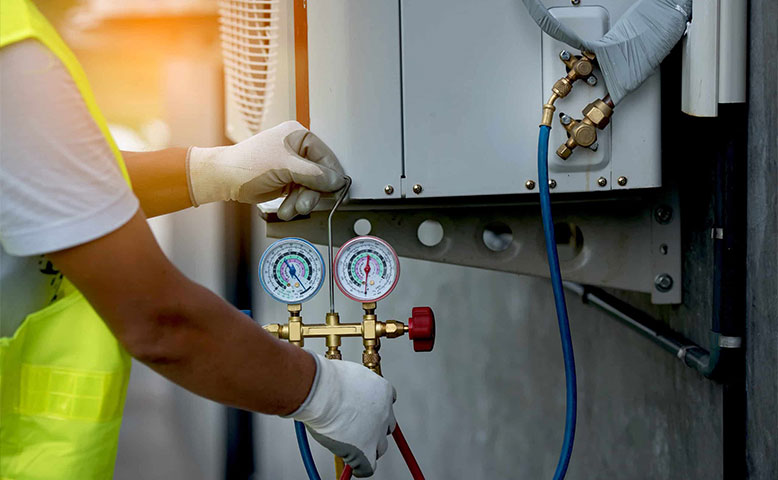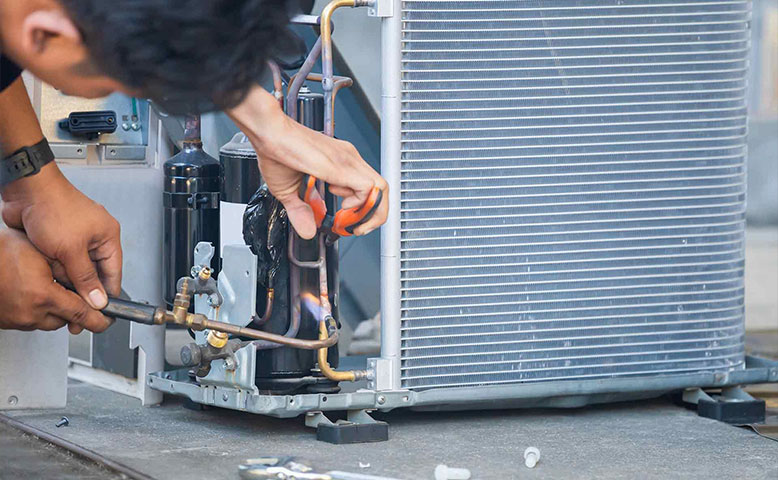When the heat rolls in or the cold bites hard, a new HVAC system sounds like a smart move. On paper, it looks simple: pick a system, schedule the installation, and enjoy the comfort. But somewhere between the decision and the installation, real life steps in. And that’s where the surprises begin.
Many homeowners walk into the process expecting a smooth ride, but the experience often turns into something else. It’s not just about a machine sitting outside your house or blowing air through vents. It touches everything—your daily routine, your monthly bills, and even your sleep.
It’s Not Just a Machine, It’s a Change to Your Entire Home
The first thing no one tells you is how deeply a new HVAC changes your home environment. Not in a dramatic, visible way. But in all the quiet corners, you don’t think about them until they’re disrupted.
- Walls might get opened for ductwork improvements.
- Ceilings might shift if vents are resized or moved.
- Closets or attic spaces could lose storage to make room for new equipment.
It’s not just installation day. It’s a series of changes that ripple through your house, often louder and messier than expected. Dust settles where it didn’t before. Noise levels shift. And sometimes, it takes weeks for the temperature in every room to feel just right again.
Energy Bills Don’t Always Drop Right Away
Everyone says energy-efficient systems save money. But those savings can take time to show up. Some folks are surprised when their first few bills don’t change much—or even go up.
Why? A few reasons:
- Old habits linger. If you keep your thermostat set the same way as before, you’re not using your new system efficiently.
- Improper sizing. A unit that’s too large or too small doesn’t run efficiently. It cycles too often or not enough, wasting energy.
- Duct leaks. If your ducts aren’t sealed or insulated properly, air escapes before it reaches the rooms.
This isn’t always the HVAC system’s fault. But it feels like a letdown if you expected instant savings. That’s why it helps to manage expectations and get the full picture before the unit goes in.
Install Day Can Be a Shock
Many expect a one-day job. Some installations do happen in a single day, but even then, it can feel like living in a construction zone. There’s noise. There’s dust. There’s movement in and out of your home from early morning to late afternoon. Pets may get nervous. Kids might lose nap time. You might not hear yourself think.
And if it runs longer—say two or three days due to structural adjustments or weather—life starts to feel unsettled. Some folks even have to book a night in a hotel when things stretch longer than expected.
Permits and Inspections Can Delay the Process
Nobody likes red tape, but HVAC installations often need city permits and inspections. These steps protect homeowners, but they can slow things down.
Sometimes, installers need to pause work while waiting for a city inspector. Other times, permits need to be filed before anything can begin. If something isn’t up to code—like an old electrical panel or outdated gas lines—you’ll need to fix that first. This isn’t about blame. It’s just how the process works. But few people talk about it until you’re staring at unexpected delays.
Ductwork Can Sabotage Your Comfort
People focus on the HVAC unit itself—the brand, the SEER rating, the price. But ducts carry the air. If they’re leaky, clogged, or poorly placed, your shiny new unit won’t make a difference.
Common duct issues include:
- Rooms with uneven temperatures
- Air that feels weak at certain vents
- Higher utility bills despite a new system
Replacing ductwork is a cost many people don’t plan for. But if your system feels wrong after installation, ducts are often the reason.
Smart Thermostats Don’t Always Feel Smart at First
Many new HVAC systems come with smart thermostats. These devices promise control and energy savings. But they come with a learning curve.
People often find themselves:
- Resetting settings they don’t understand
- Fighting with auto-schedules
- Googling error messages at 10 pm
It gets better over time. But the first few weeks can feel like learning a new language, especially for anyone who preferred the simplicity of a dial thermostat.
Indoor Air Quality Doesn’t Automatically Improve
You might expect fresher air with a new system. Sometimes that happens. However, HVAC systems don’t automatically purify the air unless extra features are added, like UV lights or high-efficiency filters.
If allergies or breathing issues were part of your decision to upgrade, you might feel let down if the air feels the same. Dust might still collect. Smells might linger. To actually feel a difference, the system needs the right accessories and maintenance from day one.
The Price Tag Is Often Just the Beginning
HVAC estimates usually focus on equipment and labor. But the final cost can stretch far beyond that.
Unexpected costs may include:
- Upgrading electrical panels
- Correcting vent sizes
- Buying a new thermostat
- Repairing drywall or repainting after installation
- City permits and inspection fees
It doesn’t mean you made a mistake. It just means the full picture wasn’t shared from the start. Knowing these extras early helps you plan better and avoid the sting later.
Noise Levels Can Be Surprising
Older HVAC units tend to be noisy. Newer ones often run quieter. But “quiet” can be misleading.
You might notice:
- A humming sound in the walls
- A low buzz when the system kicks on
- Whistling vents from higher airflow
These sounds aren’t always bad. But they can be jarring if you expect complete silence.
Maintenance Starts Immediately
After installation, most people think they’re done. However, HVAC systems need ongoing care to stay efficient.
That means:
- Replacing filters regularly
- Scheduling seasonal check-ups
- Watching for signs of wear before something breaks
Skipping maintenance shortens the system’s lifespan. But because new systems feel “fresh,” people often delay them longer than they should.
Key Takeaways for Smarter HVAC Installation
If you’re thinking about installing a new HVAC, here’s what helps you stay ahead:
- Expect more than just one day of work
- Ask about ductwork, not just the main unit
- Plan for noise, dust, and temporary discomfort
- Know that energy savings may take time
- Budget beyond the estimate
- Don’t assume air quality will improve without extra effort
- Learn how to use your new thermostat early
- Get clear on permits, inspections, and timing
- Schedule your first maintenance visit early
Final Verdict
Getting a new HVAC system is a big decision, but choosing the best company, like South Central Kentucky Heating and Cooling LLC, to install that system is a choice you won’t regret. It’s not just about comfort—it’s about the way your home feels, functions, and flows. By knowing what most people find out too late, you set yourself up for fewer surprises and a smoother experience.
Comfort comes more easily when expectations match reality. And now that you’ve got the full story, you can move forward with clarity and confidence, on your terms.





